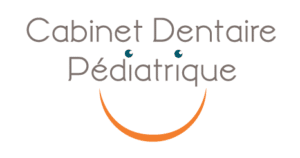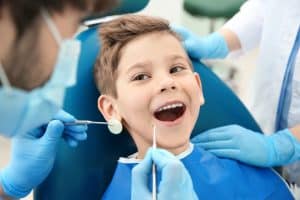Baby teeth are the first teeth of a baby and are essential for proper development. In some cases, an extraction of a baby tooth can be considered. In order for this avulsion to take place properly, the pedodontist follows a precise protocol so that your child is in the best possible conditions.
Extraction of baby teeth: why it is to be avoided?
Milk teeth appear as early as 6 months of age and finish growing around 3 years of age. The milk teeth consist of 20 temporary teeth.
Although these teeth are not permanent, they are important in the good development of children. Indeed, they are used for chewing but also for learning language.
Moreover, these temporary teeth also serve as a guide for the future growth of permanent teeth. It is therefore important to take care of them and to avoid removing them before they fall out. Indeed, bad brushing habits or cavities on baby teeth can have direct consequences on permanent teeth and getting the dentist to pull your child's baby tooth.
To take care of your child's baby teeth, don't hesitate to consult a pedodontist once a year.
Causes of baby tooth extraction
The extraction of a baby tooth is not trivial, since these temporary teeth must be preserved as much as possible. On the other hand, an avulsion on a baby tooth may be indicated in certain cases:
- If the baby tooth moves too much and interferes with the child's chewing,
- If the tooth is affected by a cavity and that during an X-ray the final tooth is seen about to appear,
- If the tooth is broken and the permanent tooth is growing underneath,
- If the milk tooth prevents the appearance of the permanent tooth,
- If the tooth is fractured following a violent impact and restoration is not feasible,
- If the baby tooth is too damaged and cannot be treated,
- A abscess can also be the cause of the extraction of a baby tooth.
The extraction of a tooth in children
How is a painless baby tooth extraction performed?
Dr. Agachi and his team do everything possible to ensure that the extraction of your child's tooth takes place in the best possible conditions. The procedure follows a specific protocol:
- In order to create a happy experience, it is necessary for the child to be relaxed. This can be achieved by placing the child under medical hypnosis or by watching a movie during the extraction. The dentist will also use appropriate vocabulary so that your child will perceive this new experience in a positive way.
- Once the child is relaxed, the extraction begins. The dentist will apply a contact anesthetic, of which the child will have chosen the taste, which will take effect after 30 seconds. If the child is stressed, the dentist can make him/her breathe a magic gas, MEOPA, to relax. This way, the child stays awake, but is serene.
- Following the premature extraction of a baby tooth, the dentist will place a space maintainer in order to guarantee the necessary space for the growth of the permanent tooth.
- The dentist then uses a laser to heal the gums. Thanks to its biostimulation effects, healing is faster and less painful.
- At the end of the extraction, your child leaves with his or her baby tooth in a small box of his or her choice of shape and color.
- The anesthesia does not affect the mucous membranes. This means that your child's lips, cheeks and tongue are not put to sleep and are not disturbed. Your child can return to his or her activities without fear of injury.
The different techniques for a milk tooth extraction
Depending on the anchorage of the baby tooth in the jaw, the pedodontist may use different techniques to perform the extraction:
- For a simple extraction, under local anesthesia, the dentist moves the tooth with a small tool, the forceps. Then he removes the tooth with a dental forceps. If necessary, he may also perform a few stitches.
- On the other hand, if the baby tooth is well rooted, the dentist will remove the attachments of the tooth with a sharp tool. Then he will use an elevator positioned between the bone and the tooth to move it. Finally, the tooth is removed with forceps.
What is the care following a tooth extraction in children?
After a baby tooth extraction, it is important to follow the dentist's recommendations. Indeed, the dentist may advise your child to :
- Do not brush the extraction area for the first 4 days to promote healing,
- Not to eat or drink food that is too hot,
- Prefer soft foods or blended foods,
- To sleep with your head elevated,
- Rinse your mouth with warm, salty water to accelerate healing.
What are the consequences of an avulsion of a baby tooth?
The avulsion of a baby tooth may cause slight pain and difficulty in eating well for a few days. In general, the healing process is quick.
The extraction of a baby tooth also creates a gap in the mouth. In order to prevent the existing teeth from trying to fill this gap by growing in the wrong position, the installation of a space maintainer is recommended. This appliance keeps enough space for the future permanent teeth to grow in.
Regular orthodontic follow-up is therefore recommended to ensure that your child's teeth are in the right position.
Management of a lactate tooth extraction
The extraction of a baby tooth is covered by the Health Insurance. This act is part of the conservative dental care and their fees are fixed by an agreement. The dentist cannot therefore charge more than the agreed fee. Conservative dental care is reimbursed at 70 % by the social security.
The price of a baby tooth extraction is fixed at 16,72 €, of which 11,69 € will be reimbursed by the social security. The rest of the cost can be reimbursed by the mutual insurance company.




